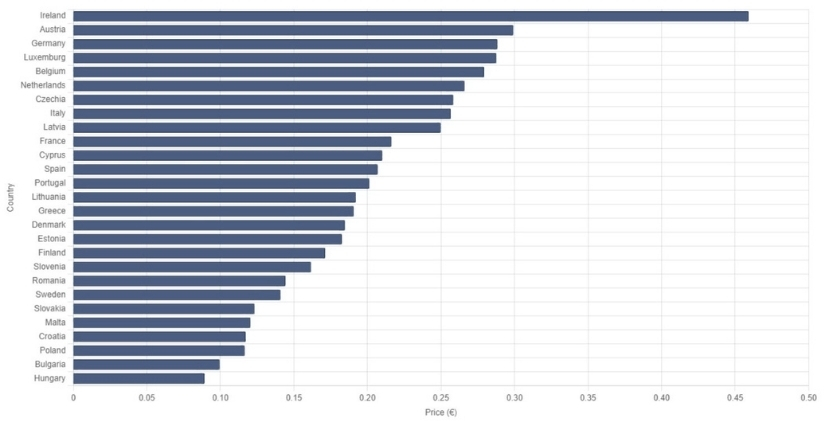
Network charges are set to increase electricity bills by over €100 p/y.
The increase will come into effect October 1st 2024, the Commission for Regulation of Utilities (CRU) announced yesterday.
Recent energy price drops, after record highs, led to optimism and provided some relief since the energy crisis began.
This is likely coming to an end as standing charges (which includes network charges) on customer bills are set to increase.
The CRU noted that suppliers “determine what level of these charges that they either absorb or pass onto their customers through their billing.”
It’s expected that the charges will be passed on to customers.
But why the increase and what can you do to offset it? First though, for perspective, let’s briefly take a look at electricity prices in Ireland.
The price of electricity in Ireland has more than doubled in the last few years to reach €0.46.
The chart below shows electricity price rises in Ireland from 2019.
Eurostat figures for 2024 are not available as of writing.
The leveling off of prices in 2023 led to optimism, which further grew in 2024 with price drops from some major suppliers.
But Ireland still, by far, has the highest unit rate for electricity in the EU.
At €0.46 per kWh, Ireland has the highest electricity price in the EU – more than double the EU average of €0.22.
The table below lists the price of electricity, from highest to lowest, in all EU member states.

Source: Eurostat. Prices exclude taxes and levies.
As you can see, Ireland has an exceptionally high unit rate for electricity, so why is the increase in network charges necessary?
The CRU note that “there is significant investment required to ensure that Ireland has a high-quality network that most importantly supports the growth in demand for all customer groups, but also the move away from fossil fuels to deliver a range of measures such as microgeneration, electric vehicles, electrification of heat and other services that will provide a more sustainable use for our electricity network.”
Revenue from the increased charges will go to Eirgrid and ESB for network transmission and distribution purposes.
More details can be found on cru.ie.
But, thankfully, there are ways to reduce electricity costs to offset the increase.
Energy providers typically offer substantial discounts to attract new customers. Switching provider, in general, can more than cover the expected €100 increase. So, if you’re out of contract, consider shopping around for a new energy supplier.
To offset a €100 increase in electricity bills annually, assuming €0.46 p/kWh, you’d need to reduce your electricity usage by just over 217 kWh p/y.
This can be achieved by reducing the use of energy guzzling appliances such as clothes dryers, washing machines, electric cookers, electric showers, dishwashers, etc.
For example, a clothes dryer uses around 3 kWh of electricity per cycle. So, reducing its usage from, say, 2 times per week to once every 2 weeks would save 234 kWh per year.
Enough to offset the cost from the increase.
From more efficient appliances to home energy upgrades, there are many options that can help you reduce energy wastage, and therefore, your energy bills.
While there may be upfront costs, the annual savings can be substantial.
One of the most impactful opportunities is a complete home energy upgrade from a One Stop Shop provider. A wide range of grants are available that can reduce the initial financial outlay and overall cost.
To take more control over your bills and offset any price increase indefinitely, consider generating your own power.
Installing solar panels can save you up to 50% on your bills. There are grants available too to reduce the cost of investment.
Ultimately, the rising network charges are expected to offset recent energy price drops.
There are ways to offset the increased network charges but the trend of increasing energy prices continues.
To take more control over your bills, get a solar quote and consultation here:
"*" indicates required fields